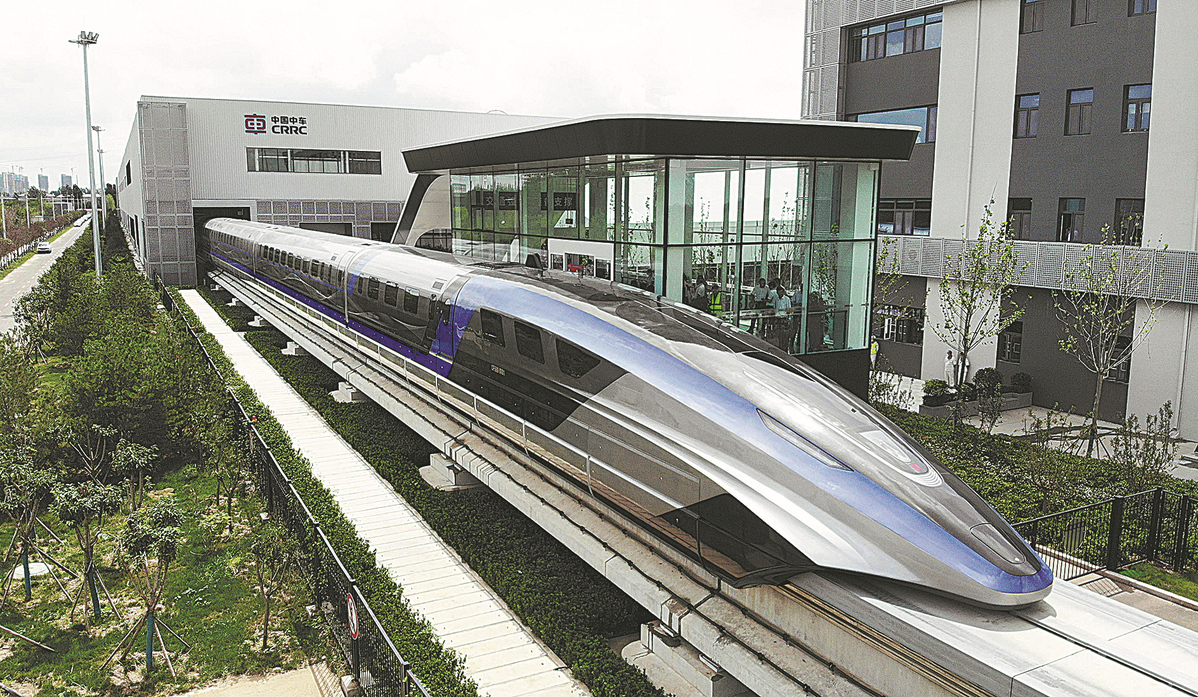
The world's first 600-kilometer-per-hour high-speed maglev train system is launched in Qingdao, Shandong province, in July last year. (Photo/Xinhua)
China's high-speed maglev transportation system leads the world, providing feasible "Chinese solution" for green and smart rail transit in the future, a transportation expert said.
The overall technological level of China's high-speed magnetic levitation (maglev) transportation system tops the global rankings, Zhao Chunfa, a researcher at the State Key Laboratory of Traction Power of Southwest Jiaotong University, told People's Daily overseas edition.
The full-system integrated technology and complete industrialization capacity are also in the leading position in the world, Zhao added.
It has been nearly 20 years since China's first commercial maglev system, a 30 km stretch between Shanghai downtown and the Shanghai Pudong International Airport, was put into operation.
Ever since, the country has made unremitting endeavors to develop maglev trains, using cutting-edge technologies to transform the domestic railway industry.
China's new high-speed maglev train, with a designed top speed of 600 km per hour, rolled off the production line in the coastal city of Qingdao, East China's Shandong province, in July last year. It is currently the world's fastest ground vehicle available.
Compared with traditional trains running on wheels, high-speed maglev trains do not have contact with rail tracks. They enjoy multiple advantages, such as speed, little noise, environment friendliness and low maintenance cost.
High-speed maglev trains can reach a top speed of 500-600 kilometers per hour, filling the gap between high-speed rail services and aircraft.
China's high-speed maglev transport system still has wide room for research and application, Zhao said.
In the short term, the country should continue to promote the construction of long distance demonstration lines with top speed of 600 km per hour, as well as the integration of related industrial chains.
In the long term, the high-speed maglev transport system could further the civil-military integration development. When the speed of maglev trains is developed into 1,000 km/h, the application scenarios could even expend to space/deep sea exploration, he added.
Editor: Tan Qikuan, Fan Chenyu (Intern)